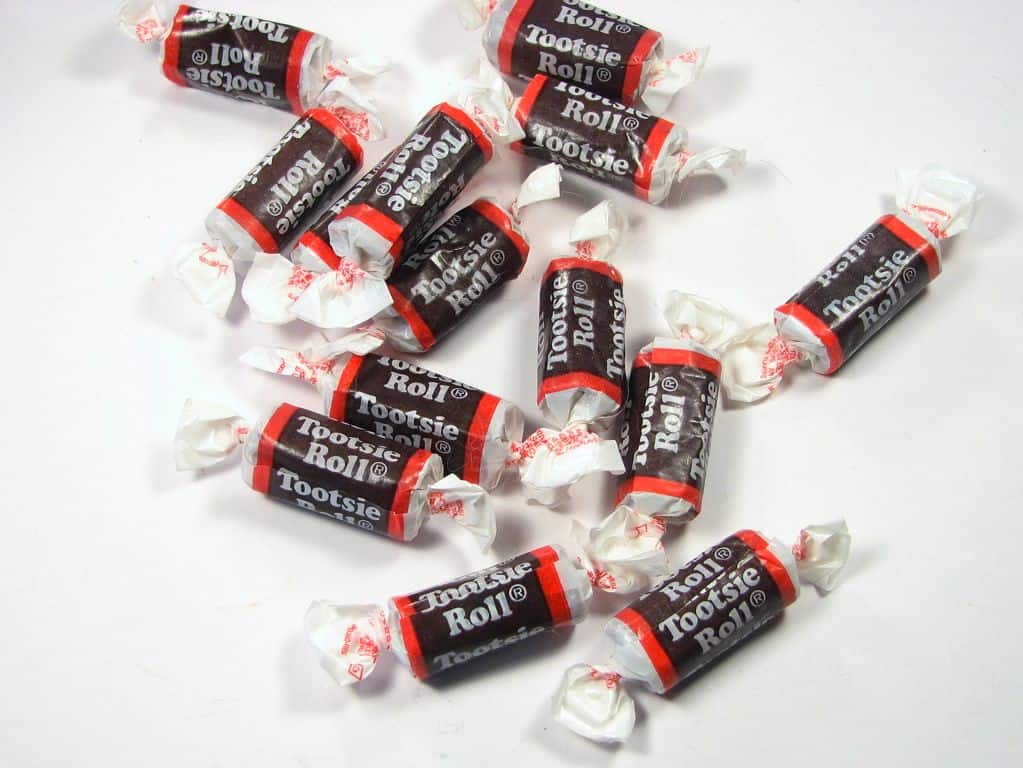For those candy-loving aficionados, every candy has its special appeal. The mood may call for chocolate with a candy crunch, and M&Ms is a perfect choice. Or should you want a bit of sour and sweet, you might opt for Skittles and Sour Patch Kids. It seems there is a candy for everyone and every occasion. But it is certain sweets, like those beloved Baby Boomer candies, that many have never heard of.
While many of the top candy picks for kids today have origins that date back to the early 20th century, there is still an entire selection of sweet treats that were favorites among the Baby Boomer generation that have fallen out of favor. These are some of the most popular candies consumed when Boomers were children.
Chuckles

©"Chuckles candies in cardboard tray" by Infrogmation of New Orleans is licensed under BY-SA 4.0. - Original / License
- Invented in 1921 by a marshmallow maker
- It was the first jelly candy
- Available in 5 flavors
Bit-o-Honey

©"Bit-O-Honey - Red" by ljguitar is licensed under BY 2.0. - Original / License
- Invented in 1924 by the Schutter-Johnson Company
- First toffee candy to contain honey
- Cost a penny per piece
Candy Cigarettes

©"Candy Cancer Cigarettes" by p_x_g is licensed under BY 2.0. - Original / License
- Made in the late 1800s
- Designed to look like real cigarettes
- Made of sugar, chocolate, or bubblegum
Necco Wafers

©"Necco Wafers Still Exist! A USA Classic Candy from my Childhood at Michaels!" by JeepersMedia is licensed under BY 2.0. - Original / License
- Invented in 1847 by Oliver Chase
- Chalky candy discs
- Originally called hub wafers
Good & Plenty

©"Good & Plenty" by renaissancechambara is licensed under BY 2.0. - Original / License
- Invented in 1893
- Licorice candy
- The oldest branded candy in American history
Sugar Daddy

©"IMG_0260" by allistrations is licensed under BY 2.0. - Original / License
- Invented in 1925
- Originally called a “papa sucker”
- The name was changed to Sugar Daddy in 1932
Atomic Fireball

- Invented in 1954 by Nello Ferrara
- 3,500 Scoville units
- Made using a hot pan method
Slo Poke

©"File:Caramel-Bar.jpg" by Evan-Amos is licensed under CC0 1.0. - Original / License
- Invented in 1926 by the Holloway Candy Co.
- Started as a sucker
- Evolved into a caramel bar
Jujubes

©"jujubes" by oskay is licensed under BY 2.0. - Original / License
- First sold in 1890
- Named after the jujube fruit, a native Chinese fruit
- Discontinued by manufacturer and no longer available
Clark Bar

©"1930s Boxes of Candies" by daveynin is licensed under BY 2.0. - Original / License
- Invented in 1917 by David L. Clark
- Peanut butter and taffy inside, chocolate coating outside
- The first “combination candy” to succeed with consumers
Pixy Stix

©"Pixie Stix at Epicurean Umbrella" by TheDeliciousLife is licensed under BY 2.0. - Original / License
- Invented in 1942 in St. Louis, MO
- Was originally a powdered drink called Fruzola
- Succeeded by Lik-M-Aid, which evolved into Fun Dip
Tootsie Rolls

©"Tootsie rolls" by oskay is licensed under BY 2.0. - Original / License
- A hand-rolled candy invented in 1907 by Leo Hirschfeld
- Named after Leo’s daughter Clara, who he affectionately called “Tootsie”
- Commercially marketed in 1908
Candy Buttons

©"button candy" by Photos by Portland_Mike is licensed under BY-ND 2.0. - Original / License
- Invented in the 1930s
- Tiny dots of sugar on a paper sheet
- Made of sugar, flavoring and coloring
The image featured at the top of this post is ©"1930s Boxes of Candies" by daveynin is licensed under BY 2.0..